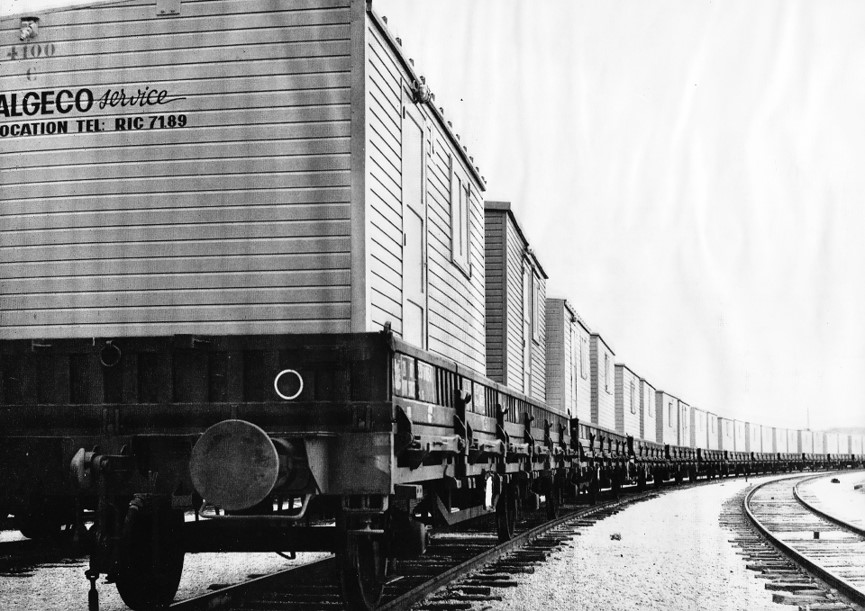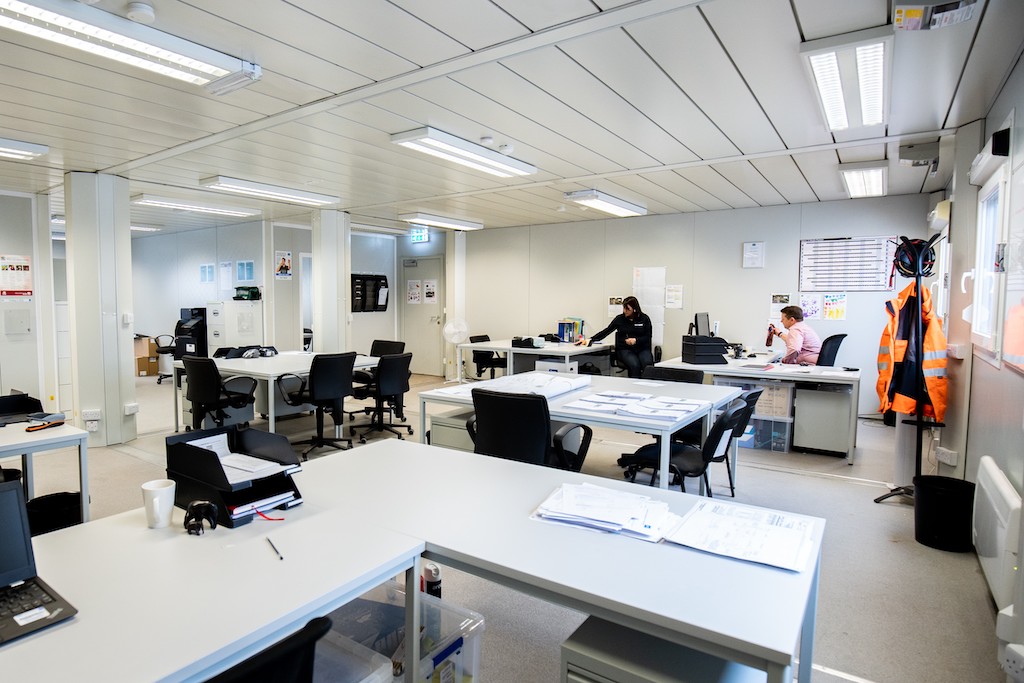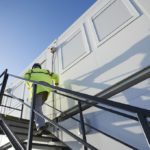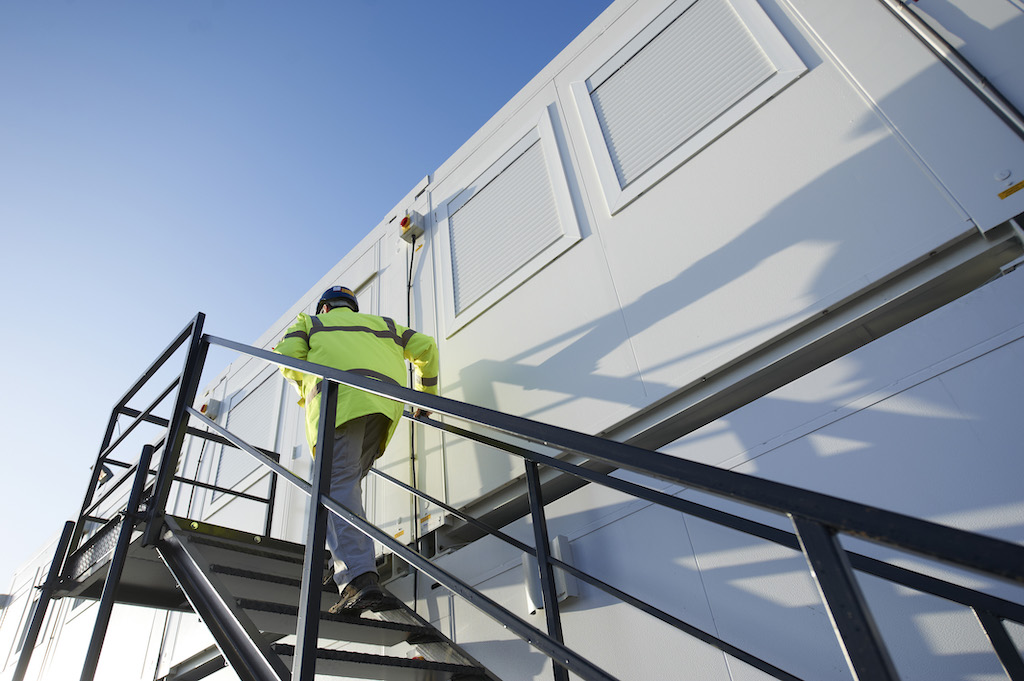Algeco explores how staff welfare and well-being is driving new developments in modular site accommodation
The construction industry has undergone enormous changes over the last three decades, particularly through digitisation, an increased focus on site safety and the move towards standardisation and modern construction methods. Even as recently as the last three years, life on the construction site has shifted dramatically, with Covid-19 changing the way we manage projects and interact on site.
So it’s no surprise that the nature of site accommodation has also changed beyond all recognition over the years. What started out as little more than a basic shelter, has now been transformed into any number of sophisticated, modular buildings which can be configured to almost any given specification and layout.
With over 60-years’ experience in this sector, we like to think that we understand the needs and challenges of life on-site and have a wide range of solutions to match.
Here, we look at how site accommodation has developed over the years, with the focus now shifting towards staff welfare and changing needs to site management and sustainability.
The earliest, timber-constructed site cabins date back to the 1950s, when we became the first to design cabins specifically for construction workers. At that time, they consisted of little more than four walls, a door and a floor. In the mid-60s, steel stackable site accommodation that could be heated began to appear. By 1995, we were the first to incorporate WCs and welfare facilities in stackable site accommodation.
Things have moved on considerably in recent years, with modular building hire shifting from individual cabins to configurations that support meetings on site with large groups of people, including architect and client meetings.
Companies no longer see hired site accommodation as being solely individual modules (although they remain a large part of the mix). The way forward is now flexible layouts where several modules can be positioned together to create an open plan space.

Endless layout and configuration options
Temporary site accommodation can be built to almost any size or specification, with endless layout and configuration options. Whole site accommodation villages can be created using scores of linked and stacked units, depending on workforce size. Internal walls can be removed for a large open plan office or added in to create quieter workspaces. Staff welfare areas, kitchens, storage facilities and shower blocks can be incorporated according to individual site requirements.
Once the building is in place, all kinds of sophisticated systems can be added, from IT networks and comms systems and smart technology. 360O turnkey solutions are available, right down to delivery and installation of kettle and toasters, so sites can be up and running from the moment the accommodation arrives on site.
Mental health
Modular site accommodation is evolving to meet the changing needs of today’s construction companies. Staff welfare and good mental health in the workplace are being prioritised more than ever before, so it’s no surprise that site accommodation for hire has developed to meet these needs. Respite facilities such as drying rooms, prayer rooms, segregated bathrooms, breakout areas and kitchens are all common features of modern site buildings.
As well as catering for the needs of a diverse workforce, temporary modular buildings offer increased site visibility, security and fire protection, ensuring staff safety and providing attractive, high-quality accommodation. This in turn widens the talent pool and combats the skills shortage by helping to attract skilled workers who previously may not have considered a career within construction.

Efficient and sustainable
Modular temporary buildings are also well-insulated, energy-efficient, recyclable and designed with sustainability in mind. In fact, the green features of site buildings are a huge part of their appeal, as Algeco Business Development Manager for the housebuilder sector, Jonathan Pringle notes:
‘The construction industry is very focused on climate change. Companies are looking at how they can work more efficiently and sustainably, and many have set challenging targets to reduce emissions. These buildings are usually despatched from our local depot, so saving on fuel costs. They can be double glazed, have water-saving features, energy-efficient lighting and climate control. They can even use smart technology to monitor, manage and reduce carbon and electricity usage.’
Crucially, all elements of these buildings can be recycled and reused once the project is complete, drastically reducing waste and extending the product’s life.
Flexible, open-plan environments
Covid-19 has accelerated the adoption of modular site accommodation within the construction industry. Jonathan comments:
‘The pandemic created a pressing need for customisable, flexible, open-plan environments. Modular buildings promote safe, collaborative, hybrid working and allow for layout changes even after the building is in place, which is important when working practices and regulations are constantly shifting.’
It’s clear to see that site accommodation has evolved beyond all recognition in recent years. But what does the future hold? According to Jonathan:
‘The challenges we’re seeing today with supply chains and an unstable economy mean that companies need to be as lean as possible. Modular site accommodation can be quickly increased and decreased in size according to changing needs. It can even be moved from site to site, to accommodate peripatetic project teams. It’s efficient and it maximises productivity, which will be important in the coming years.’
‘The focus on sustainability and climate change will continue to grow and I think we’ll see increased innovation to support this. Modular site accommodation is here to stay, but it will continue to evolve along with the needs of the people it accommodates.’
They will no doubt play an important role on a variety of sites for years to come. However, over the last ten years we have seen the humble site cabin evolve into highly sophisticated modular site accommodation.










